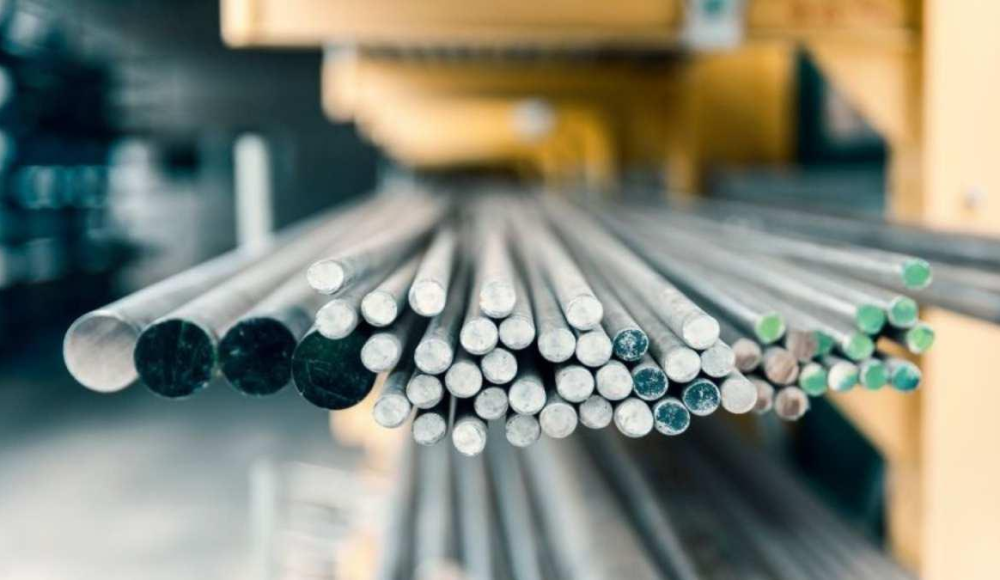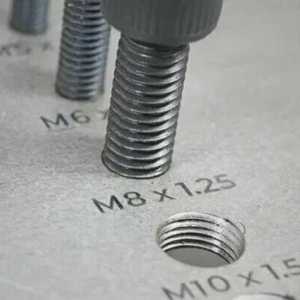Are you confused about which stainless steel to use in your projects? Stainless steel provides several grades having differences in properties, so it can be difficult to choose the right one. So, the buyer needs to understand certain characteristics so that it would fulfill the performance requirements.
Stainless steel has different types; it has different functions and contains different structures. For instance, 304 stainless steel is multi-functional and has good corrosion and weldability. While 316 grade is optimally used for marine and chemical purposes. Keep on reading to learn more about the characteristics of different grades of stainless steel and their applications. Find out how to make the right choices for your engineering needs and to advance your project.
What is Stainless Steel?
Stainless steel is an iron-chromium alloy that contains a minimum of 10.5% chromium by weight. The addition of chromium results in the formation of a passive oxide film on the steel surface. It greatly improves its properties. Moreover, adding alloying elements such as nickel and molybdenum improves other characteristics, such as strength and toughness.
Stainless steel alloy is heat resistant up to 800°C, non-porous, easy to clean. Choosing the right sort of stainless steel is paramount, although the 304 and 316 grades are commonly used depending on the surroundings and use of the product.
Properties of Stainless Steel
Here’s a table summarising the physical, chemical, and mechanical properties of stainless steel:
| Property Type | Property | Value |
| Physical Properties | Density | 7.75–8.05 g/cm³ |
| Melting Point | 1400–1450 °C | |
| Thermal Conductivity | 16–25 W/m·K | |
| Electrical Resistivity | 0.72–0.9 µΩ·m | |
| Modulus of Elasticity | 190–210 GPa | |
| Chemical Properties | Chromium Content | 10.5% minimum (varies by grade) |
| Nickel Content | 8–12% (for 304 grade) | |
| Molybdenum Content | 2–3% (for 316 grade) | |
| Corrosion Resistance | The passivation layer protects against rust. | |
| pH Range of Stability | 0–14 (varies by grade) | |
| Mechanical Properties | Tensile Strength | 500–900 MPa |
| Yield Strength | 210–250 MPa (varies by grade) | |
| Elongation | 40–50% (depends on the grade) | |
| Hardness | 150–250 HB (Brinell hardness) | |
| Impact Toughness | 50–100 J (varies with temperature) |
Benefits of Stainless Steel
Stainless steel is not easily corroded because of the involvement of chromium. It helps to form a passive oxide film. This protective layer protects SS in areas containing moisture, and chemical agents, and generally signifies its ability to maintain strength over long-term use.
Moreover, stainless steel is much harder than carbon steel by a large margin. So, it can support heavy mechanical loads and shocks, making it valuable for application in heavy industries, civil construction, and aerospace engineering.
Stainless steel has machineability ease. Therefore, it can be installed in different facilities. The following features make it easy to clean, resist absorb stains, and remain anti-bacterial in places like food processing and hospitals. In addition, the flexibility makes it possible to apply in constructional parts and ornamental products.
Stainless steel is typically 100% reusable. It goes hand in hand with sustainable development plans and therefore has no negative consequences to the environment. So, SS is well-suited for both low-temperature and cryogenic applications.
Types of Stainless Steel
Depending on the microstructure and alloy composition, stainless steel can be divided into several types. Every category has its characteristics and is appropriate for use in specific circumstances. Here is a detailed breakdown:
1. Austenitic Stainless Steel
Grades: 304, 316, 321, 310
Characteristics:
The material also has a face-centered cubic (FCC) crystal structure which explains why it is highly ductile and tough.
- Corrosion Resistance: Good corrosion resistance; especially in acidic and chloride environments. Thus Grade 316 is frequently used in marine applications.
- Formability and Weldability: SS appears to be flexible and can bonded using complex procedures like welding making the shaping and joining processes easier. It is most appropriate for uses where large deformation is concerned.
Applications:
It is used in utensils, kitchen equipment, food processing equipment, vessels, and containers for the storage of chemicals, and medical instruments.
2. Ferritic Stainless Steel
Grades: 430, 446, 409
Characteristics:
The microstructure involves the ferritic pearlitic and body-centered cubic (BCC) lattice. These grades also exhibit magnetic characteristics and low ductility.
- Corrosion Resistance: It resists stress corrosion cracking to a moderate level and is therefore recommended for moderate environments.
- Cost-Effectiveness: The advantage is that it has lesser nickel content than the austenitic grades, and therefore is more economical.
Applications:
Some common uses include Automobile exhaust systems, home appliances, and architectural structures because of their fine finish.
3. Martensitic Stainless Steel
Grades: 410, 420, 440C
Characteristics:
The microstructure generally remains martensitic due to its high carbon content. This gives the possibility of heat treatment to harden the material.
- Strength and Hardness: This material is characterized by high strength and good wear resistance, thus optimal for industries that require cutting tools and high-wear applications.
- Corrosion Resistance: Slightly more prone to corrosion than austenitic types. Their surface is usually covered with a special layer to increase the protective effect against rust.
Applications:
Widely used in knives, scissors, surgical instruments, and a wide variety of products requiring sharpness and high hardness.
4. Duplex Stainless Steel
Grades: 2205, 2507
Characteristics:
The microstructure is composed of both austenite and ferrite phases to confer moderate strengths.
- High Strength: Produce improved yield strength over the 300 and 400 series stainless steels, which in turn, allows for more slender structures and less weight.
- Corrosion Resistance: Demonstrates excellent immunity to pitting and stress corrosion cracking in chloride-containing circumstances.
Applications:
They are used commonly in the oil and gas, chemical processing as well as the marine industry.
5. PH Stainless Steel
Grades: 17-4 PH, 15-5 PH
Characteristics:
Another microstructural treatment is the aging process in which the hardening phases of the alloy are precipitated.
- High Strength and Toughness: This material has a higher tensile strength and is suitable for high-stress applications.
- Adaptability: It can be easily machined in the solution-treated condition and then can be strengthened by aging.
Applications:
These are used in aerospace structures, instruments, and in operating valves.
Applications of Stainless Steel
Stainless steel is highly used in this world since it contains many beneficial characteristics. Here is an overview of its applications:
Construction
The construction industry cannot exist without stainless steel. They are employed in beams and columns to offer structural support. Moreover, their usage increases the durability of façade and roofing constructions because the material is highly resistant to corrosion. Manufacturers of metal fasteners mainly use stainless steel for their great clamping force and structural rigidity.
Aerospace and Defense
In aerospace, stainless steel has been used in a variety of parts found in the aircraft. This material is used to build things like airframes and landing gears. In the same way, stainless steel also has high performance in severe conditions which makes it appropriate for use in the military.
Medical Technology
Stainless steel is still a major component in medical technology. Surgical instruments must be highly durable and capable of withstanding sterilization. Implants produced by SS are biocompatible and sufficient in terms of safety in emergencies.
Food and Catering
The food processing industry uses stainless steel in different ways. Adhesives produced from SS are food grade and are of high hygiene standards. Counters and sinks in kitchen appliances keep food from becoming a danger to health due to the difficult-to-clean surfaces.
Architectural Design
Stainless steel in particular is an excellent choice for architectural design because it’s not merely stylish but also serves its purpose well. It helps to increase the stability of railings, stairs, and furniture, as well as brings the modern appearance of the building. Besides, it is quite anti-corrosive to make it unique for outdoors.
Livestock Farming Equipment
Stainless steel is also widely used in livestock farming equipment.
Stainless steel feeders and drinking troughs, known for their corrosion resistance, can maintain water hygiene over the long term and prevent feed from becoming damp.
Summary
Stainless steel is probably one of the most useful materials due to its flexibility and usage in almost every sector. Its special characteristics make it suitable for application in construction, aerospace engineering, medical purposes, and the production of food products.
Furthermore, in architectural applications, stainless steel is appreciated for its aesthetic appearance and ability to avoid rusting. In the future, stainless steel will continue to be a key material.
General FAQs
Q1. What are the most effective machining techniques for stainless steel?
Some of the methods used for machining stainless steel include CNC turning, milling, drilling, and grinding. The use of carbide tools improves efficiency when working with stainless steel. Additionally, applying coolant during the machining process reduces heat and extends the lifespan of the machining tools.
Q2. How is stainless steel welded?
TIG (Tungsten Inert Gas) and MIG (Metal Inert Gas) are two methods used for welding stainless steel. In thicker sections, preheating can help prevent crack formation. Post-weld treatments, such as passivation, help enhance the corrosion resistiveness of welded metals.
Q3. What cutting methods are most effective for stainless steel?
Stainless steel must be cut with precision to minimize burr formation. This can only be achieved using fine-grained saw blades. Other techniques include plasma and laser cutting techniques. Additionally, it’s important to secure the material properly in the clamp for clean cutting and prevent heat distortion.




11 thoughts on “Stainless Steel Properties Grades & Applications”